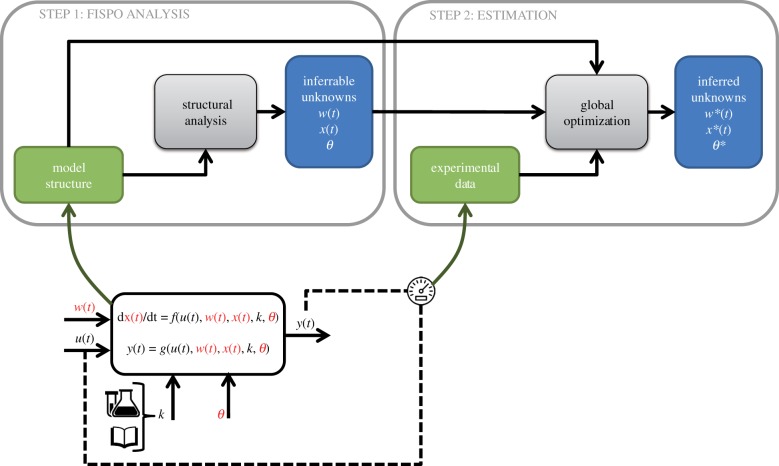Figure 1.
Workflow of the methodology followed in this paper. There are two main steps: (1) an initial structural analysis (FISPO) determines which unknown inputs (w(t)), parameters (θ) and states (x(t)) can be inferred and (2) a numerical estimation procedure recovers the values of the inferrable variables via optimization. The information required by the methodology is included in the green boxes, the grey boxes denote computational procedures and the blue boxes are the intermediate and final results of the methodology. The lower part of the figure shows the model structure components: dynamic states x(t), measured outputs y(t) (typically a subset of the states, but may also be a function of them), known constants k (either taken from the literature or previously measured), unknown constant parameters θ, known inputs u(t) and unknown inputs w(t). The model unknowns (unknown inputs, parameters and states) are coloured in red. Note that a state may be actually known if it is being measured, but this knowledge is included in the model as an output, yi(t) = xj(t), hence states are coloured in red. (Online version in colour.)

